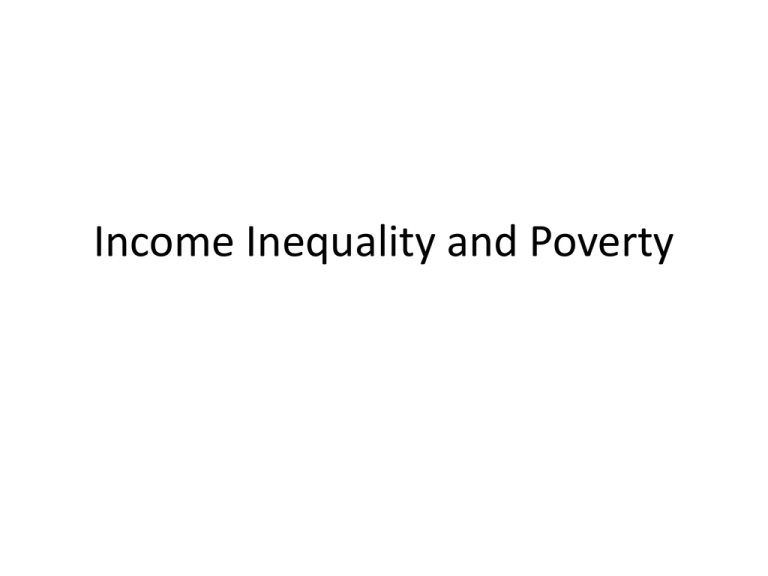Income Inequality and Poverty
advertisement

Income Inequality and Poverty Income Mobility • Income mobility – The ability to move up and down the economic ladder over time • Higher levels of income mobility? – Give workers an incentive to improve human capital and work harder – Workers have increased change of rewards – Poverty may be only temporary Income Mobility in United States Income Mobility • Marginal poor – Poor at a point in time, but have skills to move up the ladder – Low earnings are the exception – Willing to borrow to make a big purchase – Fit well into life-cycle theory model – Student straight out of college • Long-term poor – People who lack the skills to advance to higher income levels Poverty Policy • Many policies (each with their costs and benefits) have been designed to address poverty • Two conflicting motivations – We want to give generously – We want the poor to become self-sufficient • Policies – Welfare – In-kind transfers – Earned income tax credit (EITC) – Minimum wage Welfare • Not a government program but a series of initiatives – – – – Monetary payments Subsidies and vouchers Health services, housing Examples: TANF, SSI, SNAP • Who receives this? – Unemployed, disabled, veterans, dependent children – Eligibility is often limited by time and only if income is below a cutoff amount In-Kind Transfers • Direct assistance in the form of goods and services – Food banks, housing shelters, private charities, health care through Medicaid • Why give goods and services rather than cash? – Mainly to prevent the misuse of funds – Possibility of cash transfers going to alcohol, gambling addictions, or expensive clothes – In-kind transfers can be targeted at essential services Earned Income Tax Credit • The EITC is a refundable tax credit designed to encourage low-income people to work more – Can lower taxes as much as $6,000 per year – Helps over 20 million families, making it the largest poverty-fighting policy – Benefits are phased out over higher incomes, so there is no sizeable work disincentive at a specific cutoff • The EITC is a form of a negative income tax – This is a tax credit that is paid to poor households out of taxes collected from middle- and upper-income taxpayers A Negative Income Tax Minimum Wage • Discussed previously—a price floor on wages in labor markets • However, the same problems can be discussed – Low-skill people may be less productive – Firms may hire less low-skill workers – Minimum wage doesn’t guarantee employment
